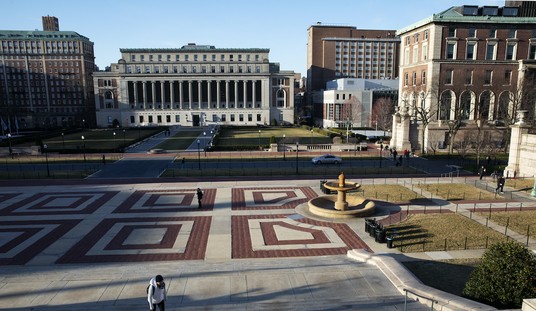I think we can call this one unexpected. While the precursor reports suggested further weakening in the workforce participation rate, they also indicated a moderately decent number of jobs added. That’s not the case from the BLS, where the U-3 jobless rate dropped to 6.7% but only 74,000 jobs were added in December:
The unemployment rate declined from 7.0 percent to 6.7 percent in December, while total nonfarm payroll employment edged up (+74,000), the U.S. Bureau of Labor Statistics reported today. Employment rose in retail trade and wholesale trade but was down in information.
The number of unemployed persons declined by 490,000 to 10.4 million in December, and the unemployment rate declined by 0.3 percentage point to 6.7 percent. Over the year, the number of unemployed persons and the
unemployment rate were down by 1.9 million and 1.2 percentage points, respectively. (See table A-1.)Among the major worker groups, the unemployment rates for adult men (6.3 percent) and whites (5.9 percent) declined in December. The rates for adult women (6.0 percent), teenagers (20.2 percent), blacks (11.9 percent), and Hispanics (8.3 percent) showed little change. The jobless rate for Asians was 4.1 percent (not seasonally adjusted), down by 2.5 percentage points over the year. (See tables A-1, A-2, and A-3.)
Among the unemployed, the number of job losers and persons who completed temporary jobs decreased by 365,000 in December to 5.4 million. The number of long-term unemployed (those jobless for 27 weeks or more), at 3.9 million, showed little change; these individuals accounted for 37.7 percent of the unemployed. The number of long-term unemployed has declined by 894,000 over the year. (See tables A-11 and A-12.)
The civilian labor force participation rate declined by 0.2 percentage point to 62.8 percent in December, offsetting a change of the same magnitude in November. In December, the employment-population ratio was unchanged at 58.6 percent. The labor force participation rate declined by 0.8 percentage point over the year, while the employment-population ratio was unchanged. (See table A-1.)
The worst news comes in the workforce numbers. Those not in the workforce increased by 525,000 in December (91.808 million), after a one-time drop in the figure for November (91.283M from 91.756M in October). That’s a big exodus of people from the workforce, dwarfing the meager number of jobs added in the economy. Part-time work remained essentially constant at 7.8 million, so the exodus points to an ugly, ugly trend.
Not surprisingly, that lead to a decline in the workforce participation rate, back down to 62.8%. That matches the 36-year low hit in October, which is one reason why the unhinged U-3 continues to drop. The workforce number acts as the denominator for U-3, which means that the result will “improve” as the workforce declines. The U-6 metric, which considers more of those who are only marginally attached to the workforce, remains at 13.1%.
Reuters tries to pass this off on the weather:
U.S. employers hired the fewest workers in almost three years in December, but the setback was likely to be temporary amid signs that cold weather conditions might have had an impact.
Nonfarm payrolls rose only 74,000 last month, the smallest increase since January 2011, and the unemployment rate fell 0.3 percentage point to 6.7 percent, the Labor Department said on Friday. The unemployment rate was the lowest since October 2008 and in part reflected people leaving the labor force.
The step back in hiring is at odds with other employment indicators that have painted an upbeat picture of the jobs market. The data showed that 38,000 more jobs were added in November than previously reported.
Construction employment fell for the first time since May and leisure and hospitality payrolls rose marginally, suggesting that cold weather in some parts of the country had held back hiring. There were also declines in government employment.
Nonsense. This data is seasonally adjusted, and December wasn’t spectacularly cold. The polar vortex hit well after the new year (and may make a dent in January’s numbers). This looks like an excuse for being blindsided by a bad report, because Reuters’ own economists predicted gains of 196,000 for December.
The Associated Press takes a more realistic view of the numbers, although Christopher Rugaber also blames cold weather for a drop in construction jobs:
U.S. employers added a scant 74,000 jobs in December, the fewest in three years. The disappointing gain ends 2013 on a weak note and could raise questions about the economy’s recent strength.
The Labor Department says the unemployment rate fell from 7 percent in November to 6.7 percent, the lowest level since October 2008. But the drop occurred mostly because more Americans stopped looking for jobs. The government counts people as unemployed only if they are actively searching for work.
Stock futures fell after the report was released.
The slowdown in hiring could cause the Federal Reserve to rethink its plans to slow its stimulus efforts. The Fed decided last month to cut back on its monthly bond purchases by $10 billion. It could delay further reductions until it sees evidence that December’s weak numbers were temporary.
Cold weather may have slowed hiring. Construction firms cut 16,000 jobs, the biggest drop in 20 months.
I doubt the Fed’s slight reduction in stimulus had this kind of impact, but that’s a better answer than cold weather in December. That is precisely why BLS uses seasonal adjustments, after all. CNBC brings up the Fed, too:
Fed policy has been contingent on two factors—a declining unemployment rate and low inflation. The central bank in December voted to cut its monthly quantitative easing program by $10 billion to $75 billion a month. Chairman Ben Bernanke has said that a 7.0 percent unemployment rate would serve as a rough guidepost for cutting the asset purchases, while 6.5 percent would be a benchmark for when to consider raising rates.
However, the combination of a declining labor force and a structural unemployment issue in which employers are reluctant to add jobs has made the labor dynamic more difficult to decipher.
“The discrepancy in the skills gap is huge,” said Tom Gimbel, CEO and president of LaSalle Network, a Chicago-based staffing firm. “I’m dealing with a thousand companies in Chicago and a few outside of Chicago that are looking to hire people and the skills are not there.”
But …
“The long-term unemployed would rather be unemployed than take a job for considerably less money than what they were making before,” he said. “The jobs are there for people willing to take a lower-paying job.”
Expect that to factor into the UI debate in the Senate.
Update: Jim Pethokoukis gives us the best overall look at the employment trend:
2.9M fewer Americans in labor force in Dec. 2013 than in Dec. 2012 vs.1.4M more employed (Household Survey)
— James Pethokoukis (@JimPethokoukis) January 10, 2014
Update: Per David Freddoso, I’ve adjusted the headline a little. I’m taking the Household data, but BLS may adjust that for demographic purposes, so I want to be more specific about the nature of the data.
Update: Steve Eggleston does a deep dive on the data, as always, and produces this in the comments:
On the part-time front:
– 4,884,000 (seasonally adjusted) worked fewer than 35 hours due to slack work, an increase of 16,000 from last month.
– 2,592,000 (seasonally adjusted) worked fewer than 35 hours due to part-time work being all the work they could find, an increase of 93,000 from last month.
– 3,550,000 (not seasonally adjusted) worked both a full-time job and at least one part-time job, a drop of 41,000 from December 2012.
– 1,969,000 (not seasonally adjusted) worked multiple part-time jobs in lieu of a full-time job, a drop of 149,000 from December 2012.








Join the conversation as a VIP Member